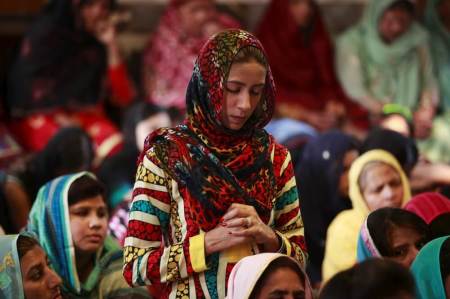100 million women ‘missing’ worldwide trapped in sex slavery, killed by abortions or domestic violence

As many as 100 million women and girls are estimated to be “missing and unaccounted for” — mostly in Asia and Africa — as the quantitative impact of sex-selective abortions, sex slavery and horrific abuses against women is shown in available data, a new report claims.
Christian humanitarian agency Gospel for Asia released the report “One Hundred Million Missing Women” this week to provide an overview of the population crisis arising worldwide.
The new report cites experts who have used data available dating back to the 1980s to determine that between 90 to 100 million women and girls who should be alive today “simply do not exist.”
According to GFA, census studies on gender ratios in Asia show that there are 106 males to every 100 females. GFA founder K.P. Yohannan contends that while such a discrepancy might not seem like much, it actually speaks to the inequality and neglect that has led to the “excessive mortality of women.”
“As we in America celebrate Mother’s Day, the devaluation and horrendous treatment and abuse of women and girls is a global crisis,” Yohannan said in a statement. “In the poorest regions of the world, and especially in Asia, women’s lives are threatened from the womb to widowhood — and millions of these precious girls will not survive to become mothers.”
Author Karen Mains, who wrote the GFA report, said the devaluation of women and societal discrimination frequently faced by women is creating the global crisis.”
“The irony of the missing-women demographics — enabled by entrenched cultural attitudes and systemic discrimination against the female sex — is that many places in the world with a skewed sex ratio are now experiencing such high female shortages that there are no longer enough women to mate in marriage with the existing male population,” she wrote.
There are a number of different factors that play into the “wild imbalance” in sex ratio for certain countries.
According to Mains, there is a general consensus that the factors that are at play include female infanticide, sex-selective abortions, domestic violence, inadequate health care, lack of pregnancy and childbirth training as well as the “booming sex-slave industry.”
Mains estimates that about 34 million women and girls are caught in the sex trafficking trade globally, including 16 million in India.
“Prostitution is legal in some parts of South Asia so the chances of victimization are drastically increased,” Yohannan said in his statement.
“Many of the poorest families are manipulated into selling their daughters to opportunists who promise a better life for them. But many of these girls — some as young as 10 — are never heard from or seen again. In this century, more women and girls are enslaved in brothels each year than were shipped to slave plantations at the height of the slave trade in the 18th and 19th centuries.”
Mains also highlighted the struggles with childbirth, stressing that 99 percent of women who die in childbirth live in impoverished nations.
“The highest maternal mortality risk in the world is in the African country of Niger. There the lifetime risk of death is 1 in 7,” Mains wrote, adding that ratio is 1 in 4,800 in the United States.
In India, that ratio is 1 in 70.
Other factors leading to the disproportionate sex ratio include failed abortions and parents under-feeding girls.
The estimate of 100 million women missing is not a new one. The estimate appears to first have been made in 1990 by Harvard University professor Amartya Sen.
“It is often said that women make up a majority of the world’s population. They do not,” Sen wrote in the 1990 article “More Than 100 Million Women Are Missing” published by the New York Review of Books.
“This mistaken belief is based on generalizing from the contemporary situation in Europe and North America, where the ratio of women to men is typically around 1.05 or 1.06, or higher. In South Asia, West Asia, and China, the ratio of women to men can be as low as 0.94, or even lower, and it varies widely elsewhere in Asia, in Africa, and in Latin America.”
The United Nations Population Fund estimates that “126 million women are believed to be ‘missing’ around the world” as a result of “son preference and gender-biased sex selection, a form of discrimination.”
“Since the 1990s, some areas have seen up to 25 percent more male births than female births,” the UNFPA explains online. “The rise in sex selection is alarming as it reflects the persistent low status of women and girls. The resulting gender imbalance also has a damaging effect on societies. Instances of increased sexual violence and trafficking have already been linked to the phenomenon.”





















